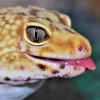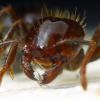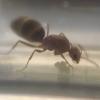- Formiculture.com
- Forums
- Gallery
- Members
- Member Map
- Chat

Moving Ants Into A New Test Tube
Started By
LearningAntz
, Jun 24 2018 4:05 PM
13 replies to this topic
#1
 Offline
-
Posted June 24 2018 - 4:05 PM
Offline
-
Posted June 24 2018 - 4:05 PM
Hello. I was wondering how I could move a colony of ants into a new test tube. The old one seems dry yet they don’t seem interested in moving. I’ve tried methods such as light, heat, darkness, etc. and none of them have worked. Will they move on their own when they need moisture and water or will they die out from lack of?
#2
 Offline
-
Posted June 24 2018 - 4:09 PM
Offline
-
Posted June 24 2018 - 4:09 PM
Put the old tube in sunlight. Always works for me, even with stubborn ants.
I accidentally froze all my ants
#3
 Offline
-
Posted June 24 2018 - 4:13 PM
Offline
-
Posted June 24 2018 - 4:13 PM
Did you try ice?
#4
 Offline
-
Posted June 24 2018 - 6:58 PM
Offline
-
Posted June 24 2018 - 6:58 PM
Careful with ice! Depending where you live a little ice can kill them all
#5
 Offline
-
Posted June 24 2018 - 7:17 PM
Offline
-
Posted June 24 2018 - 7:17 PM
I had to swing my last Pheidole colony into a new test tube using centrifugal force :0
Brutal but effective, they are thriving now
They are really stubborn, even a whole day of sun couldn't get them to budge.
I read of another person who had to wait 2 weeks of light exposure, 24 hours a day before his Pheidole colony would move.
if it's just a queen and brood, you can move them manually. Separate the queen into another container, move the brood with a wet cotton bud, twisting on and off, swing the pupa into the enw test tube.
And the guide the queen into the new one.
They will move eventually
Brutal but effective, they are thriving now
They are really stubborn, even a whole day of sun couldn't get them to budge.
I read of another person who had to wait 2 weeks of light exposure, 24 hours a day before his Pheidole colony would move.
if it's just a queen and brood, you can move them manually. Separate the queen into another container, move the brood with a wet cotton bud, twisting on and off, swing the pupa into the enw test tube.
And the guide the queen into the new one.
They will move eventually
Edited by CoolColJ, June 24 2018 - 7:18 PM.
Current ant colonies -
1) Opisthopsis Rufithorax (strobe ant), Melophorus sp2. black and orange, Pheidole species, Pheidole antipodum
Journal = http://www.formicult...ra-iridomyrmex/
Heterotermes cf brevicatena termite pet/feeder journal = http://www.formicult...feeder-journal/
#6
 Offline
-
Posted June 24 2018 - 9:59 PM
Offline
-
Posted June 24 2018 - 9:59 PM
Thanks for the help. I hadn’t thought of applying cold and having a test tube attached with a heating cable. Worked perfectly! Thanks guys!
- Shifty189 likes this
#7
 Offline
-
Posted June 25 2018 - 2:53 AM
Offline
-
Posted June 25 2018 - 2:53 AM
Thanks for the help. I hadn’t thought of applying cold and having a test tube attached with a heating cable. Worked perfectly! Thanks guys!
How did you apply the cold?
Current ant colonies -
1) Opisthopsis Rufithorax (strobe ant), Melophorus sp2. black and orange, Pheidole species, Pheidole antipodum
Journal = http://www.formicult...ra-iridomyrmex/
Heterotermes cf brevicatena termite pet/feeder journal = http://www.formicult...feeder-journal/
#8
 Offline
-
Posted June 26 2018 - 6:54 AM
Offline
-
Posted June 26 2018 - 6:54 AM
Thanks for the help. I hadn’t thought of applying cold and having a test tube attached with a heating cable. Worked perfectly! Thanks guys!
How did you apply the cold?
Basement. Worked perfectly!
#9
 Offline
-
Posted June 26 2018 - 7:03 AM
Offline
-
Posted June 26 2018 - 7:03 AM
Personally I just tap them all into an plastic bin lined with a barrier that has a new tube in it. They move in normally pretty swiftly.
#10
 Offline
-
Posted June 26 2018 - 11:51 AM
Offline
-
Posted June 26 2018 - 11:51 AM
This doesn’t sound very nice. I tried something like this once with a small fire ant colony. It worked fine, but I will never do it again unless there is no choice. The ants where all very stressed out over the hole ordeal.Personally I just tap them all into an plastic bin lined with a barrier that has a new tube in it. They move in normally pretty swiftly.
#11
 Offline
-
Posted June 26 2018 - 2:27 PM
Offline
-
Posted June 26 2018 - 2:27 PM
Personally I just tap them all into an plastic bin lined with a barrier that has a new tube in it. They move in normally pretty swiftly.
best to put them in the fridge first for 10-15mins to put them to sleep, before doing this
Current ant colonies -
1) Opisthopsis Rufithorax (strobe ant), Melophorus sp2. black and orange, Pheidole species, Pheidole antipodum
Journal = http://www.formicult...ra-iridomyrmex/
Heterotermes cf brevicatena termite pet/feeder journal = http://www.formicult...feeder-journal/
#12
 Offline
-
Posted June 27 2018 - 11:23 AM
Offline
-
Posted June 27 2018 - 11:23 AM
Personally I just tap them all into an plastic bin lined with a barrier that has a new tube in it. They move in normally pretty swiftly.
best to put them in the fridge first for 10-15mins to put them to sleep, before doing this
please be careful giving this advice. for those of us in the tropic's this simple act could kill the hole colony. If you live in a tropic (or even sub-tropic) be very careful using cold for anything related to ants.
#13
 Offline
-
Posted June 27 2018 - 9:40 PM
Offline
-
Posted June 27 2018 - 9:40 PM
I use sunlight as my first method. The danger if that too much sun will cause condensation on the tube which can kill workers and brood so I check tube every few min if in direct light. If no move after days and tube is critically failing I will move queen by taping tube on the new one then use a long wooden Q tip to roll eggs up. I then cut tip off and leave in the new test tube with queen. Queen will gather eggs from Q tip and then after a day you can remove Q tip end.
I do lose some eggs and sometimes workers this way but save the colony so only use last method when critical.
My lasius alienus and some tetramorium don't often move like my formica or Camponotus so I resort to this method with then.
Camponotus Pennsylvanicus/Modus
Tetramorium sp. E
Formica Podzolica
Lasius Alienus
Lasius Niger
Formica Ravida
#14
 Offline
-
Posted June 28 2018 - 5:19 AM
Offline
-
Posted June 28 2018 - 5:19 AM
please be careful giving this advice. for those of us in the tropic's this simple act could kill the hole colony. If you live in a tropic (or even sub-tropic) be very careful using cold for anything related to ants.
Personally I just tap them all into an plastic bin lined with a barrier that has a new tube in it. They move in normally pretty swiftly.
best to put them in the fridge first for 10-15mins to put them to sleep, before doing this
I agree with this. If I weren’t living in Canada and instead somewhere more tropical I’d probably stay away from using cold entirely.
1 user(s) are reading this topic
0 members, 1 guests, 0 anonymous users




















